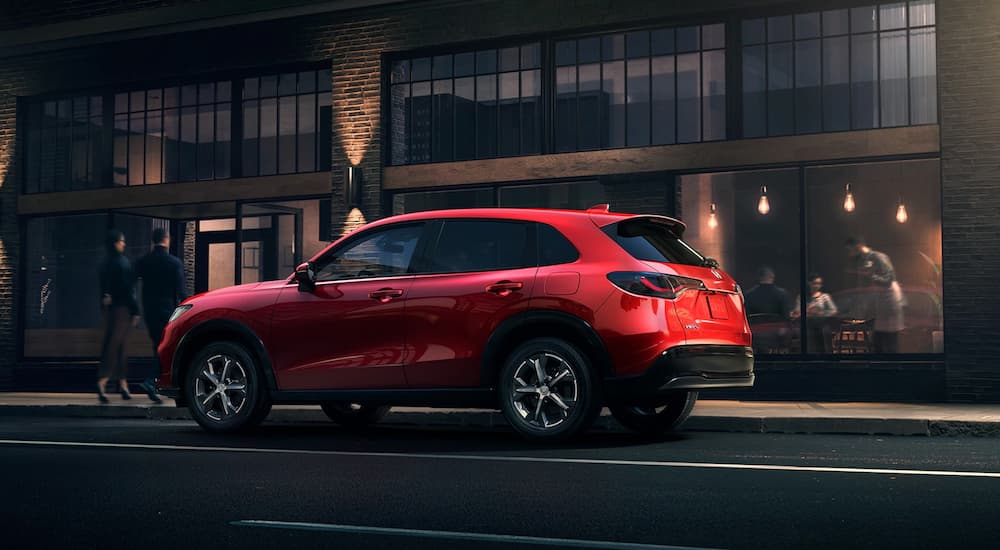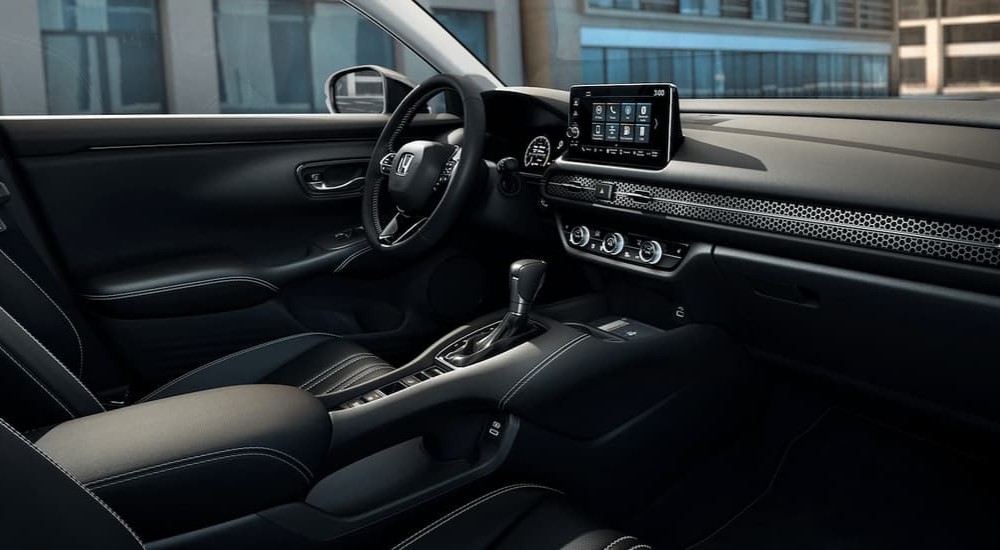Subcompact crossovers have been lighting up the scene for years now due to the fact that they’re small enough for any driver to handle yet packed with more space and features than you’ll find in sedans. Among the many models that have experienced a redesign for 2023, the Honda HR-V is one of them, and the next time you see a Honda HR-V for sale at your local dealership, pay attention.
This crossover has quite a history in the industry, making its original debut long before its rivals. With Honda engineering coursing through it, its performance is not to be ignored. From humble roots, as it emerged amongst a slew of rugged off-roaders, to its grown-up appeal today, the HR-V has experienced quite an evolution throughout its decades on the scene. Let’s take a drive back in time and grow with the smallest member of the Honda family of respected SUVs.
A Civic-Inspired Crossover
In the late 90s, SUVs were beginning to emerge, and mainly, they exhibited rugged exteriors with no-frills interiors, fit for avid off-roaders and adventurers. Brands like Jeep, Subaru, and Ford ran the scene, so it wasn’t common to see a small-size traveler like the HR-V on the road alongside these bold machines. Well, that’s exactly what Honda did back in 1999 when it first debuted its small crossover, the HR-V, based on the popular Civic platform. It wasn’t the automaker’s first attempt at introducing a compact SUV onto the streets, as the immensely popular CR-V paved the way for its smaller sibling to follow suit.
A crossover is built on a car platform, and what better platform for the HR-V to showcase than the acclaimed Civic? Its lightweight design, SUV characteristics, and efficient engine, which could be equipped with AWD capabilities, quickly set it apart from the others on the road. Frequently known as a blend between a station wagon and a hatchback, the pint-size HR-V did the job for many drivers. Commuters loved it due to its efficient engine, and when it came time to load it up with more, its rear cargo hold was spacious enough to accommodate gear, travel belongings, luggage, and more. As the first-generation HR-V entered a new millennium, it offered two engines to choose from, allowing drivers to achieve the experience they demanded in their everyday ride.
Small like a Civic yet versatile like an SUV, the HR-V was a brand-new model, not just for Honda but for the industry as a whole. This subcompact traveler could perform among the best, with available all-wheel drive capabilities you couldn’t find in small-size options on the road. Plus, with folding and tilting rear seats, the opportunity to haul more was born in the subcompact segment. If you thought that the HR-V was just another subcompact SUV, you’d be mistaken. It was an original, ahead of its time, and a trendsetter in the industry.
The Big Comeback
After about seven years on the market, Honda pumped the brakes on the production of the HR-V. The brand chose to focus on other models, putting the HR-V on the shelf for about eight years. Then, in 2014, it re-emerged, and now, there was more competition in the industry. This meant that the HR-V had to continue its job of standing out in the crowd. It did this well by showcasing features like a modern body style with contemporary styling cues, cutting-edge tech to make the drive more convenient, and a gas engine and diesel option to choose from to enhance its performance on the road.
As the years progressed, the HR-V experienced a number of refreshes to help it stay on top of the competition. From a new front fascia and commanding grille to revitalized lighting elements, new bumpers, and more, the HR-V became sleeker over time. Various tech elements could be found within, including the integration of Apple CarPlay and Android Auto in the 2019 model, along with intuitive touchscreens, advanced safety features, and so much more, making the second generation of the HR-V a far cry from its humble beginnings. Honda chose to give its powertrain a facelift as well, opting for just one engine, a 1.5L, paired seamlessly with a continuously variable transmission to make for a smooth and accommodating ride, perfect for daily drivers.
For 2021, Honda went even further with the HR-V’s design, showcasing even sharper features, prominent Honda badging, and curves in all the right places. A modern minimalist interior took centerstage, with open, airy spaces and clean lines throughout. Quality materials and plenty of room inside made it feel as though you were riding in a much larger vehicle. The HR-V was quickly showing drivers that it deserved to be taken seriously, despite its petite stature.
All Grown-Up
The 2023 Honda HR-V welcomes a new era for this subcompact traveler, one marked by a serious revitalization. Not only is the HR-V fitted with more impressive features, but it’s also longer and wider than before; however, it still shares its platform with the iconic Civic. This stance allows it to offer a more refined ride, as well as more space inside to accommodate passengers and gear, making the newest HR-V to hit the market Honda’s best one yet. Along with sharing a platform with the Civic, it also shares a powertrain armed with a 2.0L four-cylinder and the athletic handling we’ve grown to know and love about the legendary Civic models.
Taking more cues from the Civic, the HR-V also showcases Civic-inspired styling in its exceptionally laid-out cabin. From a honeycomb-detailed dashboard to leather-trimmed seating, and other desirable comfort features, the upscale appeal of the HR-V is undeniable. Although you won’t find the popular Magic Seat in the second row anymore, the HR-V now offers a larger cargo hold to accommodate more must-have items on the road. You’ll also find the HR-V’s exterior styling is similar to its interior, with a honeycomb grille, sporty design elements, and a contemporary appeal from front to back.
An available 9-inch touchscreen sits at the helm of any journey, with available wireless smartphone integration and a wireless charging pad to add value to the daily drive. From tech to style, performance to overall presence, the Honda HR-V can proudly roll with some of the biggest names in the industry. Its grown-up persona fits it well, and with its ability to handle more inside, it appeals to even more drivers, including families, who demand a vehicle that can handle their driving needs without question.
The Rise of the HR-V
It’s no secret—the Honda HR-V is more ravishing than ever before, and to think it started so humbly as one of the only subcompact crossovers on the scene, dwarfed by the larger competition. It shows that continuous advancements and growth can make for an unstoppable force in the industry.
With all of Honda’s frequent updates to this model, in terms of powertrains, design elements, tech features, overall handling, and more, the HR-V has become one of the best-suited crossovers to accompany drivers everywhere they need to go with ultimate assurance. It’s a life lesson to keep working on yourself and not let setbacks define you. Despite being pulled off the market for eight years, the HR-V came back stronger than ever, and it has grown to become the icon it is recognized to be today, paving the way for others to confidently follow its lead.





